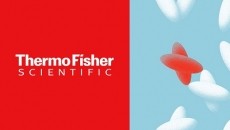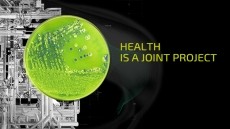Merck trims down in search of higher margins
distribution business VWR International and operate as a smaller,
higher-margin business focused on pharmaceuticals, chemicals and
liquid crystals.
The company made the announcement today as it reported earnings before interest and tax (EBIT) down 3.8 per cent to €538 million in 2003, despite exceptional charges of €198 million, on revenues down 2.7 per cent to €7.20 billion.
The company's chief executive, Bernhard Scheuble, said that the disposal of VWR, along with last year's €235 million sale of its half share in the orthopaedics joint venture BioMer, "will make Merck smaller but give it higher profit margins and leave it almost free of financial debt".
US company Clayton, Dubilier & Rice is buying VWR for $1.68 billion (€1.32bn).
VWR had sales last year of over $2.5 billion, or roughly a third of Merck's turnover, but has low margins. Merck dropped plans to float the company last year and said in December it was likely to sell the company in the first quarter of 2004. Analysts welcomed the move, particularly the benefit in reducing the firm's net debt which had stood at €2.9 billion ahead of the announcement, making it one of the most highly-geared companies in the sector.
VWR has been directly affected by the difficult economic situation, with significant R&D spending decreases across the biotech and pharmaceutical marketplace, and as a US-based business reporting results in Europe has been hard hit by the effects of the weak dollar. Selling off this low-margin business could improve margins from around 10 per cent at present to 156-16 per cent, according to analysts.
In the US alone VWR has around a 15 per cent share of the life science research market, just behind its rival Fisher Scientific (18 per cent), with which it dominates this market. Merck Eurolab is the leading player in Europe.
As part of the agreement, VWR will continue to distribute Merck's laboratory products. For that purpose, effective 1 April, Merck will combine its Analytics & Reagents and Life Science Products divisions into a new Life Science & Analytics division. This division will enter into a long-term distribution agreement with VWR.
Erbitux upside?
Merck's 2003 operating result jumped 19 per cent to €736 million, boosted by strong performances from liquid crystals and its generics business, as well as higher payments from US sales of the Glucophage (metformin) family of diabetes treatments, and payments from Schwarz Pharma on US sales of generic omeprazole.
There is also good news in Merck's ethical pharmaceuticals segment, with the first approval of colorectal cancer drug Erbitux (cetuximab) in Switzerland. Analysts at Goldman Sachs, in a note released on Friday estimate that this product, licensed for the European market from US company ImClone Systems, could bring in €350 million in sales in 2008 and provide nearly 9 per cent of group operating profit that year.
Pharmaceutical sales in 2004 should increase slightly, said Merck, helped by the European rollout of Erbitux and the lipid-disorder treatment Niaspan (niacin).
GS believes the company will come under pressure this year, however, with the loss of revenues on sustained-release metformin products in the US as patents expire, the launch costs for Erbitux and an expected decline in the level of royalties on generic omeprazole once Schwarz loses market exclusivity for the product in the US.
"Traditionally, Merck's pharma division has been the company's core profits driver while chemicals has been a supporting player. We believe that there is likely to be a reversal in fortunes for the two divisions in 2004," said the analysts, as liquid crystal sales are driven by the strong growth in the flat screen television market.















